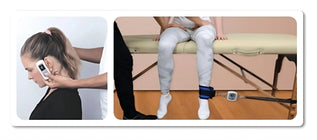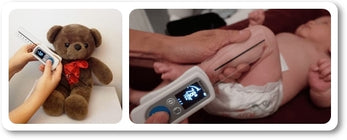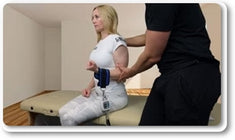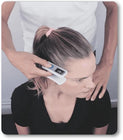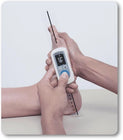Concurrent validity and reliability of measuring range of motion during the cervical flexion rotation test
Objective
Headache is a common and costly health problem. Although the pathogenesis of headache is heterogeneous, reported contributing factors are dysfunctions of the upper cervical spine. The flexion rotation test (FRT) is a commonly used diagnostic test to detect upper cervical movement impairment.
A digital goniometer may support precise measurement of movement impairment in the upper cervical spine. However, its reliability and validity is not assessed, yet.
The aim of this study was to investigate the reliability and validity of the digital goniometer compared to an ultrasound-based movement analysis system.
Study Details
Authors – Thomas Schöttker-Königer
Year of study – 2020.

Method
Two separate cross-sectional studies were conducted using the digital goniometer EasyAngle (Meloq AB, Stockholm, Sweden) for a) investigating the concurrent validity of upper cervical range of motion (ROM) during the FRT and b) determining the inter- and intra-rater reliability in the target population of patients with head and neck pain.
Sixty-two participants, 39 with and 23 without head and neck pain, were recruited for the concurrent validity study. For the reliability study, a total of 50 participants were recruited. Intraclass correlation coefficients (ICC) and Bland Altmann plots were used to assess validity and ICC values, Bland Altmann plots as well as Kappa coefficients were used for estimating intra-rater and inter-rater reliability.
Scapular mobility study
Result
Concurrent validity was strong with an ICC (2,1) of 0.97 for ROM to either side (95%CI = 0.95–0.98). Bland Altman Plots revealed a mean difference between measurement systems of 0.5° for the left and 0.11° for the right side. The inter-rater ICC (2,1) was 0.66 (95%CI 0.47–0.79, p < 0.001, SEM 6.6°), indicating good reliability. The limits of agreement were between 10.25° and − 11.89°, the mean difference between both raters was − 0.82°. Intra-rater reliability for the measurement of ROM during the FRT was between 0.96 (ICC 3,1) for rater 1 and 0.94 (ICC 3,1) for rater 2.
Conclusion
The digital goniometer demonstrated strong concurrent validity and good to strong reliability and can be used in clinical practice to accurately determine movement impairment in the upper cervical spine.
Scapular mobility study
The full study can be found here.

